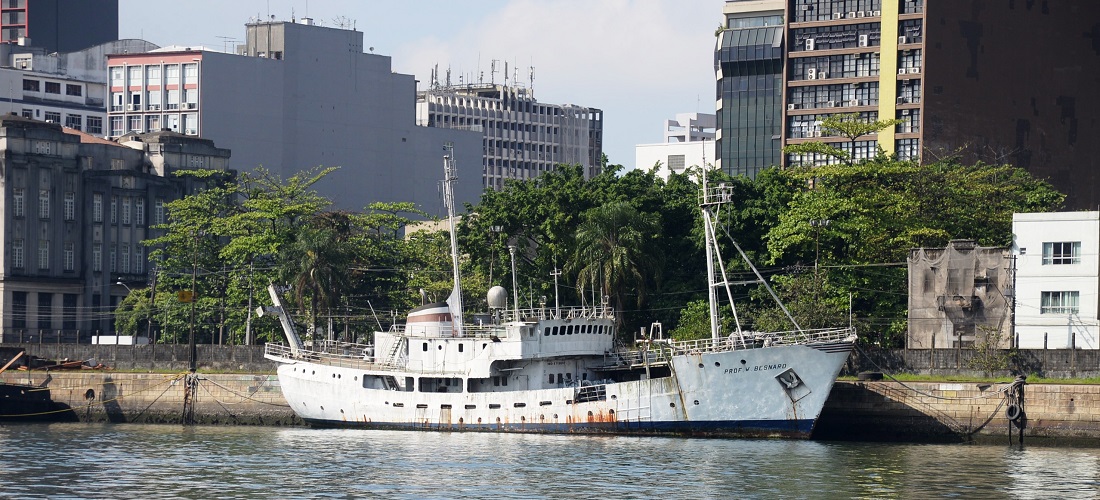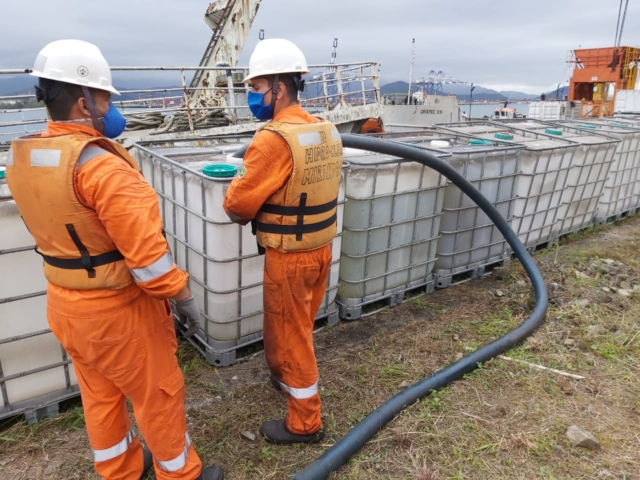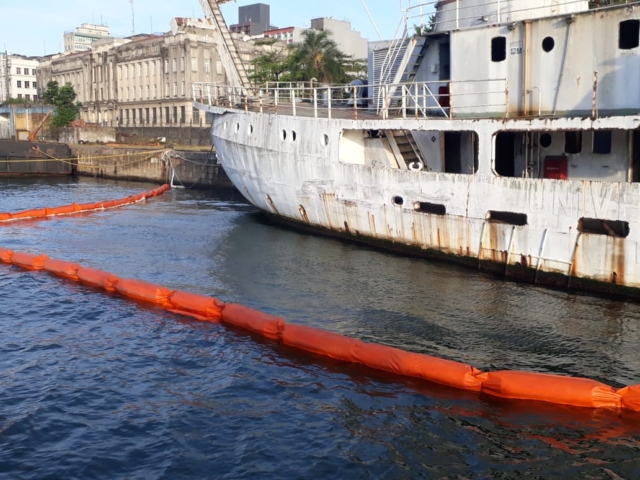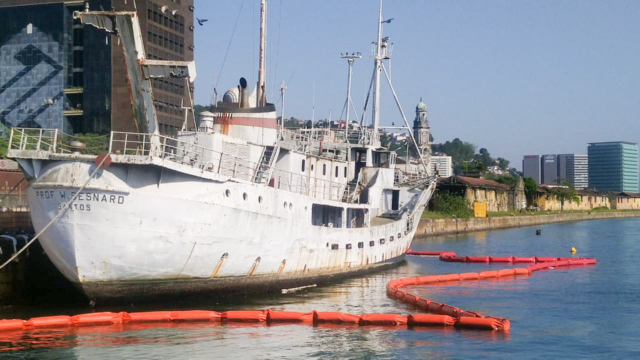
Historic Brazilian ship no longer at risk of sinking
Jul, 15, 2020 Posted by Sylvia SchandertWeek 202029
The emergency operation to remove water from inside the hull of the oceanographic vessel Prof. W. Besnard, moored at the Port of Santos, and which was in danger of sinking, was concluded on June 14th by the Port Authority. The historic vessel was in danger of sinking, although this operation has averted that danger for now.
The operation to remove water from the ship’s engine room started at the beginning of last week after a joint survey was carried out by the Port Authority and the Brazilian Institute of Environment and Renewable Resources (Ibama). The Port Authority ordered the Instituto do Mar (Imar), the vessel’s owner, to take urgent measures. As Imar claimed to have no financial resources for the adoption of the necessary measures, the Port Authority mobilized its emergency response resources.
Approximately 130,000 liters of water, accumulated due to the vessel’s abandonment status, were removed. The service was carried out to safeguard the estuarine environment and navigation safety at the Port of Santos, which would be affected if the vessel were to sink. In addition, there would be the loss of the historic ship, which was one of the resources used by Brazil in its operations in Antarctica.
The service, which had the support of Ibama and the Brazilian Navy, will be complemented in the coming days when attempts will be made to remove the thin layer of oil left inside the engine room. The amount spent on the operation, as well as the removal of the vessel from the pier, will be collected from the Instituto do Mar. The entity should also be responsible for the proper disposal of all the waste generated.
Ship construction
In 1959, the project began for the ship Prof. W. Besnard, the first in the Naval Construction course at the Polytechnic School of the University of São Paulo (USP), done at the request of USP’s Oceanographic Institute and designed by Professor Wladimir Besnard, researcher, first director of the Institute and honored with the name of the vessel. Manufactured at the A / S Mjellem Karlsen shipyard in Bergen, Norway, the ship arrived in Brazil in 1967, years after the death of its creator. During the first 23 years, the ship sailed without interruption, totaling hundreds of scientific trips.
-
Ports and Terminals
Oct, 08, 2021
0
Port of São Francisco do Sul – Trains account for 50% of the grain load
-
Uncategorized
Oct, 25, 2019
0
Technology increases agricultural productivity and decreases labor
-
Grains
Nov, 30, 2020
0
Port of Paranaguá receives first soy shipment in over 10 years
-
Meat
Aug, 01, 2022
0
MFA’s petition against live cattle exports gathers 550,000 signatures




